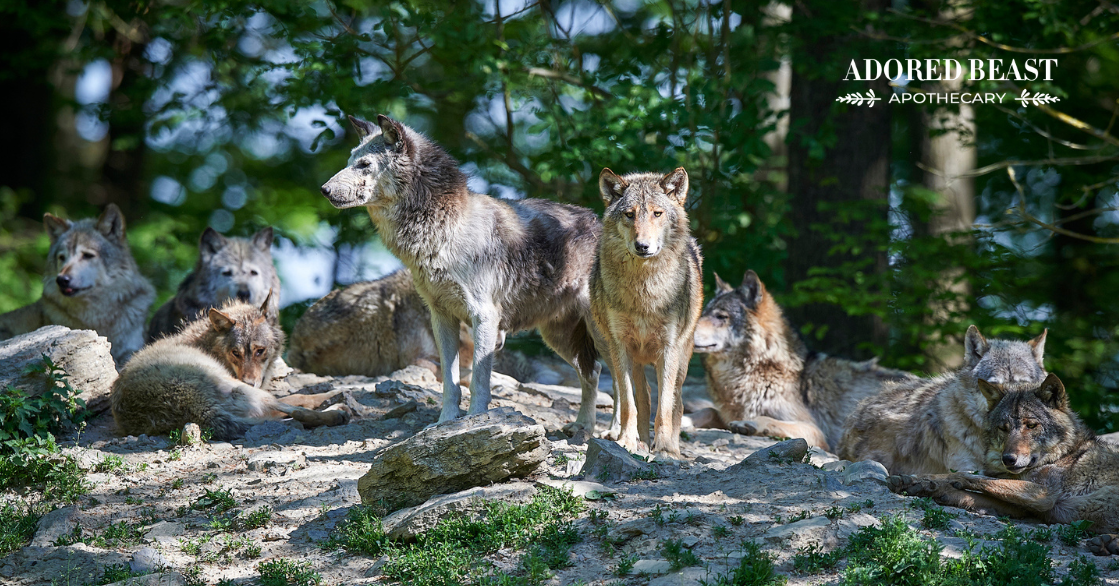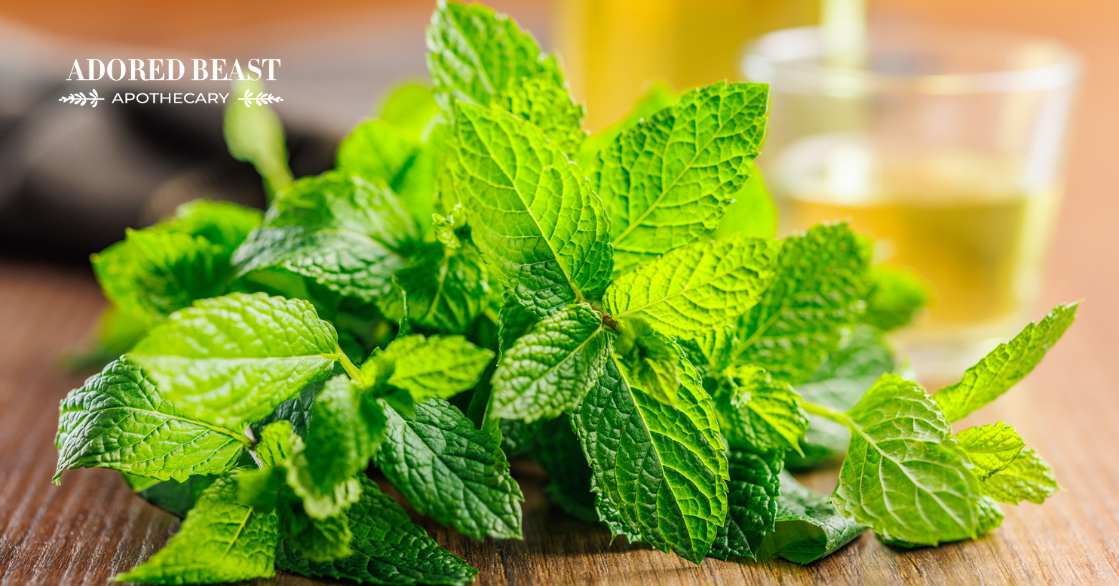Each and every one of us is exposed to glyphosate at some level. It’s in our food, in the soil, and in the water. In fact, research from the University of California shows that levels in humans have increased significantly over the last decade. And, according to research, glyphosate levels in dogs are 30 times higher than in humans.
This is such an important topic of our time, especially with the growing awareness of the vast impacts of toxic chemicals in our environment and in our foods. In order to start this discussion, let me provide a definition and a bit of history.
What is Glyphosate?
Glyphosate is an herbicide chemical that is now the most commonly used “weed killer” around the world, with extremely heavy use in the United States. Its original purpose was for agriculture and farming, in order to gain more yield of food crops by decreasing the competitive weed plants. Unfortunately, the popularity of this chemical grew rapidly into uses for industrial and residential purposes, including forestry and trees, as well as commercial and residential lawns and gardens. This means it is now being sprayed all over the place! As if it wasn’t bad enough contaminating our food and our pets’ food, we now face heavy levels of contamination in our environment too.
The glyphosate compound was originally discovered by a chemist working for the Monsanto company, and was brought to market for agricultural use in 1974 under the trade name “Round-Up”. After the final patents for Monsanto expired about 20 years ago, numerous glyphosate-containing products began to fill the market. There are now over 750 different glyphosate products for sale in the United States alone.
Farmers quickly adopted glyphosate for agricultural use, especially after Monsanto introduced glyphosate-resistant Round-Up ready crops, i.e. GMO crops. Genetically modified seeds were developed to create crop plants that would withstand the glyphosate chemical, enabling farmers to kill weeds without killing their crops.
Glyphosate Today
Today, glyphosate is most widely recognized as a broad-spectrum herbicide, but it is also used to regulate plant growth in order to ripen specific crops as a crop finisher. And finally, glyphosate works as an antibiotic, due to its antimicrobial properties in the soil. This is not good news. In other words, glyphosate has herbicide action on plants and antibiotic action on soil microorganisms, which also means that glyphosate is now the most common and widespread antibiotic used globally.
In fact, over the past 40 years we have seen a worldwide 100-fold increase in the use of glyphosate-based herbicides, and this trend is likely to continue. Part of the reason for the rapid increase in use of this herbicide is due to the global emergence of glyphosate-resistant weeds, requiring even higher applications of this chemical with each passing year, in order to maintain its effectiveness. Ugh!
At this point, farmers use glyphosates on numerous agricultural crops, many that are GMO – and many that are not!
Common GMO crops include:
- corn
- soybean
- alfalfa
- apples
- canola
- cotton
- papaya
- potatoes
- squash
- sugar beets
These crops were genetically engineered to be tolerant to glyphosate. Genetic engineering involves biotechnology that alters plant biology. In this way, certain genes in plants are turned on or off, or in some cases they are completely removed and replaced with different genes. The intended purpose for this type of genetic engineering was to create crops that were not only tolerant to herbicides, but also more resistant to insects and more tolerant to droughts.
However, glyphosate is also applied to many types of crops that are not genetically engineered. In this scenario, glyphosate is a crop desiccant, meant to allow for timing of harvesting and to hasten the ripening of some crops. Because these non-GMO crops are sprayed with glyphosate at the end of harvest, these foods have even higher levels of glyphosate than the GMO crops that are sprayed prior to growth.
Common non-GMO crops with the highest levels of glyphosates include many common ingredients often used in dog foods, such as:
- oats
- wheat
- barley
- rye
- legumes
- chickpeas
- beans
- potatoes
- peas
With these extreme levels of use, another concerning factor is that glyphosate is water soluble. This means the chemical absorbs into ground water and also into the condensation cycle, coming back down to the earth in rainfall. For some perspective on this, reports have shown detectable levels of glyphosate in about 70% of the rainfall globally!
How does Glyphosate Affect Animals and Humans?
Let’s start with a brief list, and then I’ll explain some of these categories in more detail.
Known effects of glyphosate:
- Decreases plant nutrition
- Toxic and carcinogenic
- Endocrine (hormone) disrupter
- Destroys gut lining (i.e. causes leaky gut)
- Interferes with microbiome balance
- Leads to antibiotic resistance
1. Glyphosate Affects Plant Nutrients
For starters, glyphosate is stripping our plants of nutrition. As a non-selective herbicide, it prevents most plants from making certain proteins necessary for plant growth. Specifically, it inhibits the synthesis of alkaloids which provide the medicinal qualities of plants and important amino acids such as tyrosine, tryptophan, and phenylalanine. These amino acids are the building blocks of important factors that we need in our bodies, such as neurotransmitters. Alkaloids are organic nitrogen compounds of plant origin that have diverse and important physiological effects on humans and animals. These components contribute to the medicinal properties in food. In fact, alkaloids possess a variety of pharmacological potential including effects that are analgesic, anticancer, anti-hyper glycemic, antiarrhythmic, antibacterial, and neuro-modulatory.
This ultimately means that glyphosate chemicals are preventing our foods from being our medicine, because plants are becoming “empty” of the nutrients we need from them.
The action of glyphosate to inhibit protein synthesis (via a specific enzyme pathway) in plants is also acting on microorganisms in the soil. This is leading to depleted soil health, which ultimately affects all life on the planet, including humans and our beloved pets. In addition, the anti-microbial action of this widely used chemical is leading to more antibiotic resistance on our planet, ultimately interfering with the microbiome in human and animal bodies too.
2. Toxic Effects and Levels of Exposure
It is well established that glyphosate has carcinogenic properties, and there are several known litigation cases (against Monsanto) which have awarded settlements to human cancer victims with high exposure levels to glyphosate. The University of California San Diego School of Medicine performed a study demonstrating the association between the glyphosate herbicide and negative effects upon the human liver. Other studies in humans have linked herbicide exposure to cancers of the colon, sinus, lung, prostate and ovary, lymphomas and multiple myelomas.
Routes of exposure to glyphosate toxicity include ingestion, absorption into the skin or eyes, and inhalation. Monsanto’s own studies have shown that farmers who get glyphosate on their skin have 10 times the levels in their bodies as those who use gloves.
Although foods are a large source of glyphosate exposure for dogs and other animals, it appears that dogs are getting a significant exposure from the environment as well. Many dogs spend quite a bit of time outside – walking, playing, and rolling in the grass, lawns and other areas that are sprayed with Round-Up and similar weed killers. This can add up to a lot of skin and contact exposure. Furthermore, dogs often spend a lot of time sniffing in areas of grass, other plants, and along the ground, and therefore are likely to get a high level of sinus and inhalation exposure.
In fact, research shows that dogs are twice as likely to develop lymphoma if Round-Up is applied on their properties 4 or more times a year. The Tufts University School of Veterinary Medicine reported that exposure to lawn chemicals raises the risk of canine malignant lymphoma by more than 70%, and further veterinary studies at Purdue University found links between glyphosate exposure and bladder cancer in dogs. Unfortunately, I can attest to the notable rise in bladder cancers that I am seeing in canine patients in just the recent few years.
This is likely associated with the fact that the majority of glyphosate is excreted in urine and feces, (with lesser extents being measured in hair or skin samples). In the American human population, 86% of people have detectable levels of glyphosate in their urine with an increase of about 38 times higher than what was found in human urine 20 years ago.
As alarming as these levels of exposure are for humans, we now know of the dramatically higher exposure rates for dogs and other animals. Researchers and independent laboratories, such as HRI (Health Research Institute) have found glyphosate levels in the urine of dogs (in the United States) to be an average of 32 times higher than their human counterparts, with cats at an average of 16 times higher than people. Horses have very high glyphosate levels too, and are just behind dogs, at about 29 times higher than humans. Farm animals have been tested too, but it is notable to mention that dogs have the highest level of glyphosates of all the animals tested.
3. Gut Toxicity and Leaky Gut Syndrome
The toxic actions of glyphosate on mucous membranes leads to numerous health issues.
Glyphosate destroys the cellular matrix of linings that it interfaces with inside the body. This means the gut is dramatically affected with the destruction of its intelligent barrier lining, leading to hyperpermeability and leaky gut syndrome. Leaky gut is known to be a root cause of disease and chronic inflammatory conditions. Additionally, glyphosates interfere with the function of the kidney tubules (diminishing the ability to excrete wastes effectively) and this chemical also affects the nasal membranes and sinus tissues.
Numerous studies have shown that the combination or interaction inside the gut between glyphosate and gluten (or specifically with gliadin, as the breakdown of gluten) causes an exponential toxic synergy which markedly increases hyperpermeability in the gut lining.
This results in gastrointestinal inflammation (IBD or IBS) as well as chronic systemic inflammation and reactive immune response. Understanding the effects caused by the combination of gluten and glyphosate gives explanation for the significant rise in gluten sensitivity issues, affecting the health of both animals and people over the last few decades.
Although glyphosate was brought to market (as Round-Up) in 1974, its widespread use became more common in the 1990s, when gluten reactivity was also beginning to be commonly recognized. The marked hyperpermeability caused in the gut allows for additional toxins (beyond glyphosate) to gain systemic access into the body too. Furthermore, the destruction of the gut barrier leads to a significant disruption in the microbiome, which impacts the immune system, gut health, brain health, and overall body systems.
4. Endocrine Disrupting Chemical
Glyphosate has many key characteristics that qualify this chemical as a major disruptor of hormones and endocrine systems in the body. Today’s pets commonly suffer from many endocrine diseases including thyroid disease, adrenal gland issues such as Cushing’s disease and Addison’s disease, pituitary problems, and diabetes. There are numerous studies showing the impacts of glyphosates on hormones, reproduction, and even birth defects too.
Glyphosate Levels in Foods
Most pet foods have significantly high levels of glyphosate. For instance, one bowl of typical dry kibble dog food has an average of 400 ppb compared to a raw meat meal measuring at an average of only 1 ppb! In other words, an average quality kibble meal contains 400 times the glyphosate level compared to a raw food or meat-based meal. This shows a remarkable difference in the level of exposure to this toxin for pets eating a heavily processed diet compared with a species appropriate fresh food diet.
Furthermore, as many non-GMO crops are known to contain higher levels of glyphosate than the GMO crops, this creates a significant concern regarding the levels of glyphosate in (non-organic) foods such as oats, lentils, chickpeas, beans, peas, and potatoes. Interestingly, these foods are typically included in even higher portions in the grain-free varieties of pet food. Understanding that glyphosate is a notable offender to gut health, causing gut permeability and microbiome disruption, suggests there may be a link between the high levels of glyphosates in grain-free dog foods and the improper absorption and utilization of the amino acid taurine, in addition to many other issues. A recent white paper titled Dilated Cardiomyopathy and Diet in Dogs reports the taurine issue is “a multifactorial problem related to the change in the bacterial flora of the gut, perhaps from high percentages of legumes in the diet which can change the taurine absorption and alter its digestibility and bioavailability”. Additionally, the writers state that problems may be related to the manufacturing processes of the protein sources. Thermal (high heat) processing of proteins causes altered digestion, creates pro-inflammatory mediators, and leads to a shift in microbiome bacteria. This type of shift can promote an intestinal environment that favors increased numbers of taurine-degrading bacteria. There are many issues interacting here, but glyphosate levels may be one of the important factors.
Glyphosate Testing
The Health Research Institute (www.hrilabs.org) is an independent, non-profit laboratory and research program that performs quality testing techniques and offers direct-to-consumer testing of people and animals. This means you can have your pet (or yourself) tested, via submission of urine samples to HRI. The HRI lab has tested levels in numerous types of fresh foods and commercial pet foods, in addition to testing urine, feces, and hair samples of humans, dogs, cats, horses, and farm animals.
HRI has tested organic foods, and the urine of humans consuming organic foods vs. nonorganic foods. Reports show that 95% of foods labeled organic do not contain any detectable levels of glyphosate, which means only about 5% of foods labeled organic do contain traces of glyphosate. This may be the result of several factors, including drift from nearby farms, co-mingling in transport, packaging or processing, and perhaps some mislabeling or fraud.
TIP: The add-on of humic and fulvic acid is an excellent support for chelation and also supports the integrity of the gut!
Minimizing the Damaging Effects of Glyphosate
One important measure of protection from glyphosate and other toxins is to eat organic and clean foods as much as possible. It is not always easy to find organic foods created for pets (although more options are becoming available!) and it may sometimes be difficult for pet owners to afford these types of diets. Fortunately, by simply feeding a raw food or mainly meat-based, species appropriate diet, you can significantly decrease your pet’s exposure to glyphosate as well as other herbicide toxins.
There are also several natural supplement products that can significantly help to combat the damage caused in the body by consistent exposure to glyphosate and other toxins in food and the environment.
1. ION Biome’s Gut Health for Pets is unique and natural product which offers the ability to restore damage from glyphosate disruption in the gut and other mucous membrane linings (i.e. kidney tubules and nasal/sinus tissues). This product was created by Zach Bush, M.D., and there is a human version product available also. ION Gut Health comes in a liquid form, and uses soil-based, humic substances and carbon-based redox molecules to help restore the communication between mitochondria, cells and bacteria. Specifically, it helps to support glyphosate detoxification and repair gut permeability, leading to a healthier microbiome shift and immune status.
2. Another natural product which can address toxin damage and support detoxification from glyphosate is Clinoptilolite. This natural zeolite, found in volcanic rocks, works much like a charcoal, but with specific affinity for binding and removing toxins and heavy metals. Glacier Peak Holistics offers a Clinoptilolite (zeolite) supplement designed for dogs, cats and horses. This product combines zeolite clay with high quality kelp to include important trace minerals and collectively provide a wide array of detoxification and immune support benefits.
3. Fulvic and humic acid are ancient minerals that are paramount when it comes to removing toxins from the body. Humic acid focuses on the outside of the cell, where it intercepts toxins and viruses. This prevents them from attaching to the cell. On a cellular level, fulvic acid teams up with its counterpart, humic acid. Fulvic acid is a much smaller molecule focused on the intracellular level. It does this by creating more permeability to the cell membrane. This allows a greater body of bioavailable nutrients to actually enter the cell, at the same time binding together with water. They’re excellent at assisting the body with the natural action of the removal of toxins. Fido’s Flora, Felix’s Flora, and Soil & Sea all contain fulvic and humic acid.
4. And finally, adding a phytoplankton supplement to your pet’s diet provides an excellent detoxifying agent as well as many other health benefits. Phytoplankton is known to support cellular regeneration and has a unique ability to strengthen cell membranes. It also provides a host of trace minerals and other nutrients that effectively support the immune system, liver function, cardiovascular health, anti-cancer benefits, and more.
In conclusion, as you can see, glyphosate is a very dangerous chemical that has become the norm for use in today’s society. Although there is a growing push to limit its use due to the vast body of accumulating research about its negative impacts, it is still widely used in agriculture and for other purposes. It is therefore important for us to know about its effects on our health and the health of our pets. The more knowledge we have, the better care we can provide for our beloved animals.












